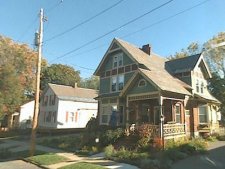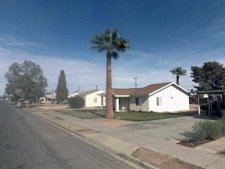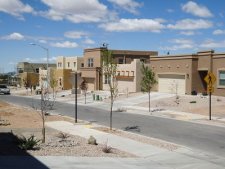The real estate market in the Santa Barbara area is still
moving forward. Comparing this October
to last year’s, we had 52% more closed sales of single family residences and
planned unit development units (all to be referred to as houses). Looking at our year-to-date total, we have surpassed
the number of sales every year in the past 11 years except 2004, which had just
a few more sales than we have this year.
Our condos have also been flying off the shelf. There were over 64% more sales this October
than there were last October. Overall,
the number of condo sales is up about 45% over last year.
Our year to date median price of $799,000 is basically the
same as it was last year. We are seeing
the bulk of our sales occurring under this price, but we are still seeing high-end
properties continue to sell. Last year
in October, only six properties closed escrow over $2,000,000 and none over
$4,000,000. This past month, we had
eight properties close escrow between $2,000,000 and $4,000,000 and six
properties over $4,000,000 which represents more than 13% of the monthly
sales.
The year to date median for condos is $400,000 but this is
almost 4% less than last year’s median. This can partially be attributed to the fact
that almost 40% of the condos that sold this year were either short sales or
bank owned (also known as “distressed”), and those types of properties tend to
be sold a bit less than market value.
At the beginning of the year, it was easy for first buyers
to find affordable properties. There
were quite a few houses under $500,000 back in January; now there are four
available, most with two bedrooms and one bath. It is interesting to see that 15 houses did
close escrow this month under $500,000, which shows that they the potential to
buy in that range is still possible.
It is important to note that over 1/3 of the houses sold above
their list price. There are still
multiple offer situations in every price range. Some properties have had more than 10
offers. I just participated in a
multiple offer situation on a well-priced house and there were 16 offers with
the assumption that the price went well over the list price. There is still pent up demand for buying.
The percentage of distressed houses that closed escrow this
month was around 28%. As of this
writing, we have a total of 29 distressed houses in the Multiple Listing Service
(MLS) with 13 of them in escrow. For
condos, the percentage was 39% of the closed escrows were distressed. Currently, there are a total of 9 distressed
condos in the MLS and all of them are in escrow. It
appears that the number of available distressed properties is shrinking in
numbers.
One of our biggest issues is the lack of inventory. As of this writing, we have 42 houses that
are priced under the current median of $799,000. That represents just 11% of our available
inventory of houses. The median price
of the houses in escrow is $815,000.
Once these properties close escrow, we will most probably see an upswing
in our median price. As Table 1
indicates, overall we only have 3.2 months of inventory, which means it would
take that long to sell the current inventory.
Note that in the city of Santa Barbara and the area we refer to as
Goleta (comprises most of “Noleta” and the city of Goleta) there is less than 2
months of inventory. Higher end
properties usually take longer to sell, but 5.9 months of inventory for
Montecito actually represents a balanced market. The number of sales for both Carp/Summerland
and Hope Ranch are statistically too low to have an accurate basis for months
of inventory.
Based on the above information, here is a plea to our
financial institutions, “If there really is a Shadow Inventory, please, please,
please release them onto the market!”
Even with all of the good news, there are a few concerns
that could cause turmoil in the real estate market in 2013. One of those concerns is the extension to the
Mortgage Forgiveness Debt Relief Act of 2007.
This Act is to expire on December 31, 2012 and at this point it does not
look as if it will be extended this year.
The purpose of the Act is to prevent
families who hold distressed properties from facing a hefty tax bill for trying
to modify their mortgage or to seek a short sale through their lender. Even
those facing foreclosure could find themselves forced to pay a “foreclosure
tax” if Congress doesn’t act.
“If Congress does extend the law for
federal income taxes, California is poised to follow suit for state taxes,”
said Alex
Creel, senior vice president of governmental
affairs at the California
Association of Realtors. "Clearly
nothing will happen on the extension this year," he said. Even if Congress
waits until well into 2013 or even 2014 to extend the bill, it could easily
make the bill retroactive to Jan. 1, 2013, so no one would be left out in the
cold. Admittedly that would put people in an awkward spot if
they're trying to do transactions in 2013 and Congress hasn't acted," he
said. "They would be out there wondering if the extender would go
through."
The National Association of Realtors has a campaign to rally
Realtors regarding this issue. If you would like to have your voice heard regarding this
issue, go to their website at www.realtor.org.
The other concern is in regards to the Mortgage Interest Deduction (MID). There is a possibility that this deduction
may be totally removed as a write-off or else it may be modified. Many pundits doubt that it will be totally
removed. In regards to modifying, some
of the more popular proposals include eliminating the deduction entirely for
second homes; converting the present MID to a 12 percent tax credit; reducing
the $1 million ceiling to $500,000; and dropping the deduction in favor of
lower tax rates. There is still a
possibility that it will not be modified at all.
Progress has been made in bringing stability to the housing
market. Any changes to the MID could
place the housing market and the broader economy under stress and destroy
wealth accumulation that is the foundation for a healthy middle class.
Our market is doing well and buyers are out in full force. With such a robust market, whether you are a
buyer or a seller, you would be wise to enlist the aid of a knowledgeable
Realtor to help you through the process.
Let’s think positively that the
Mortgage Forgiveness Act gets extended and, if there are modifications to the
MID, it does not adversely affect most homeowners.




















